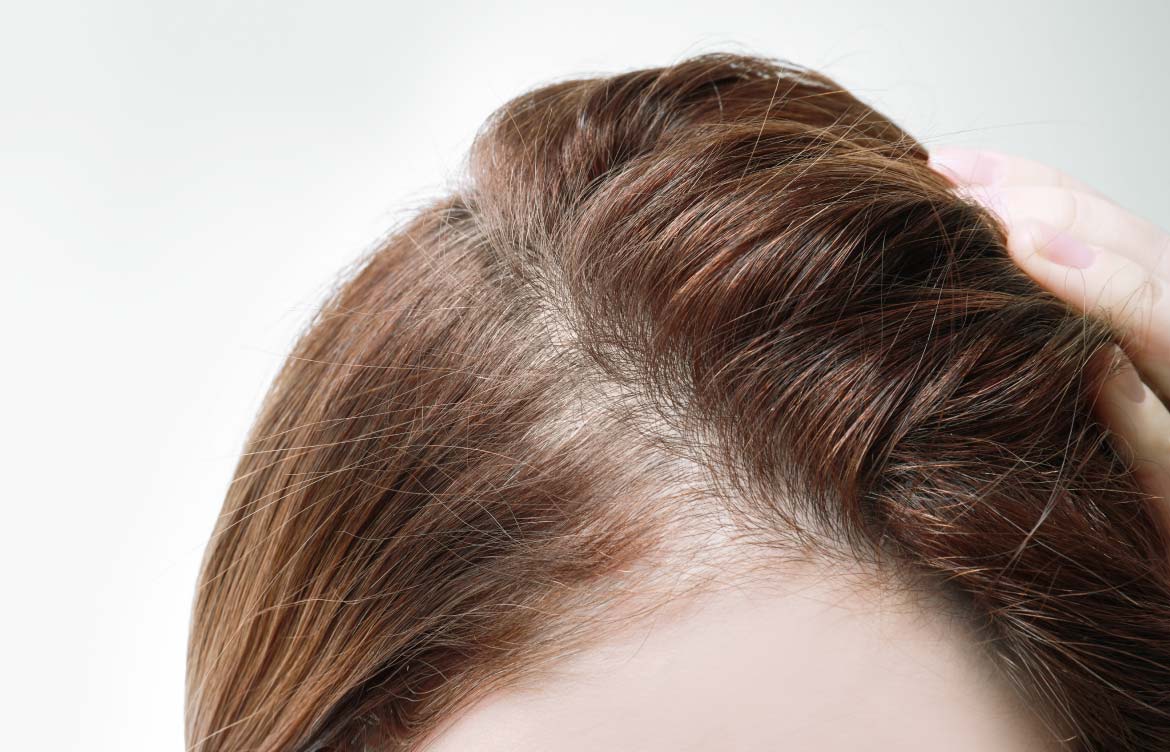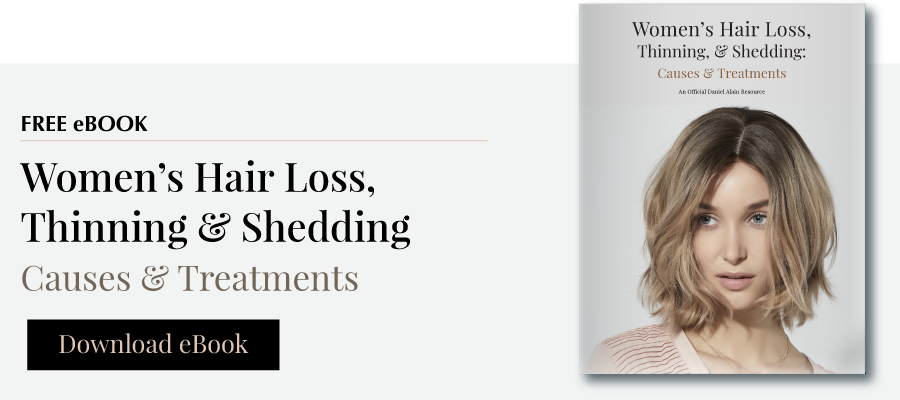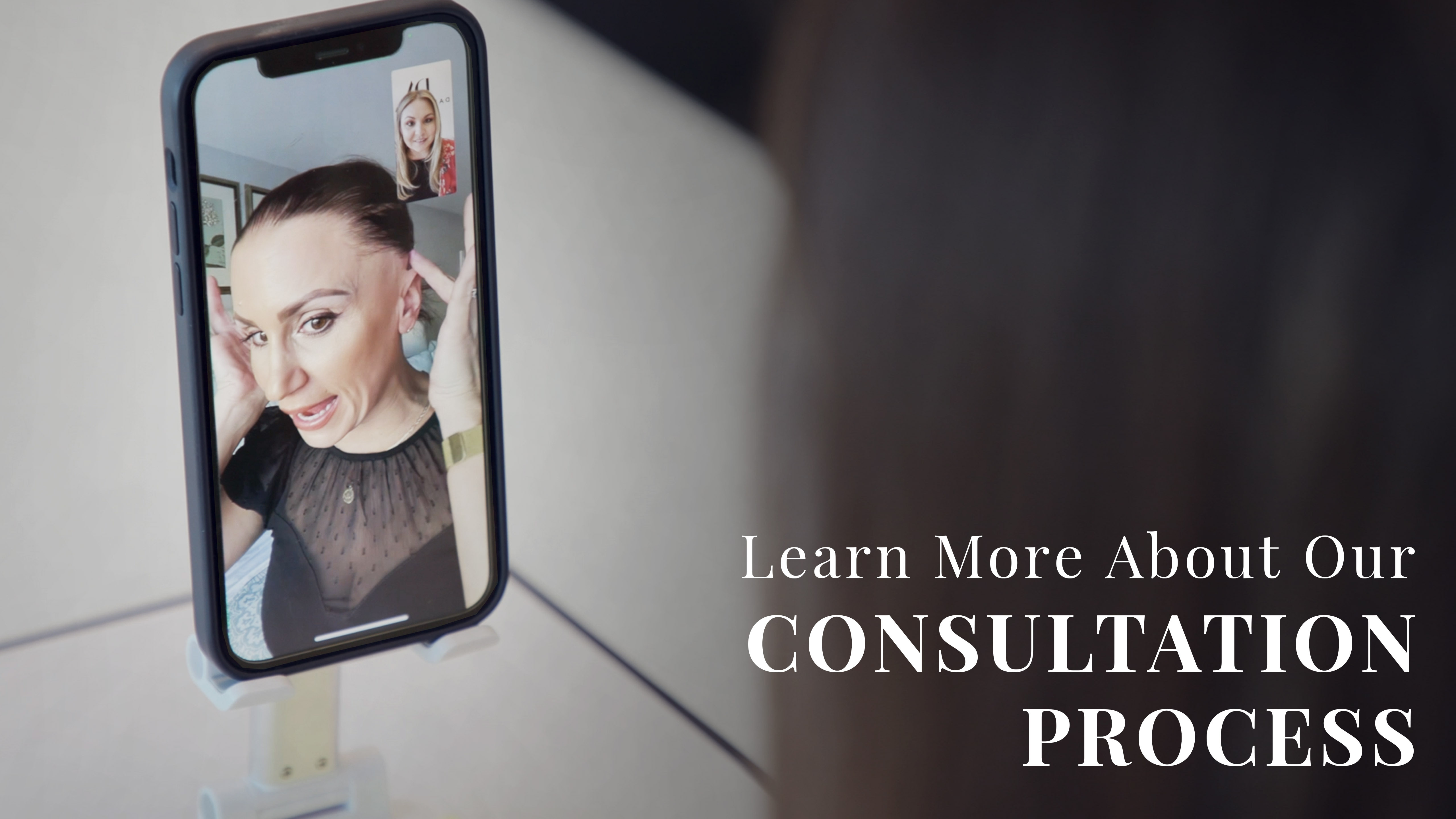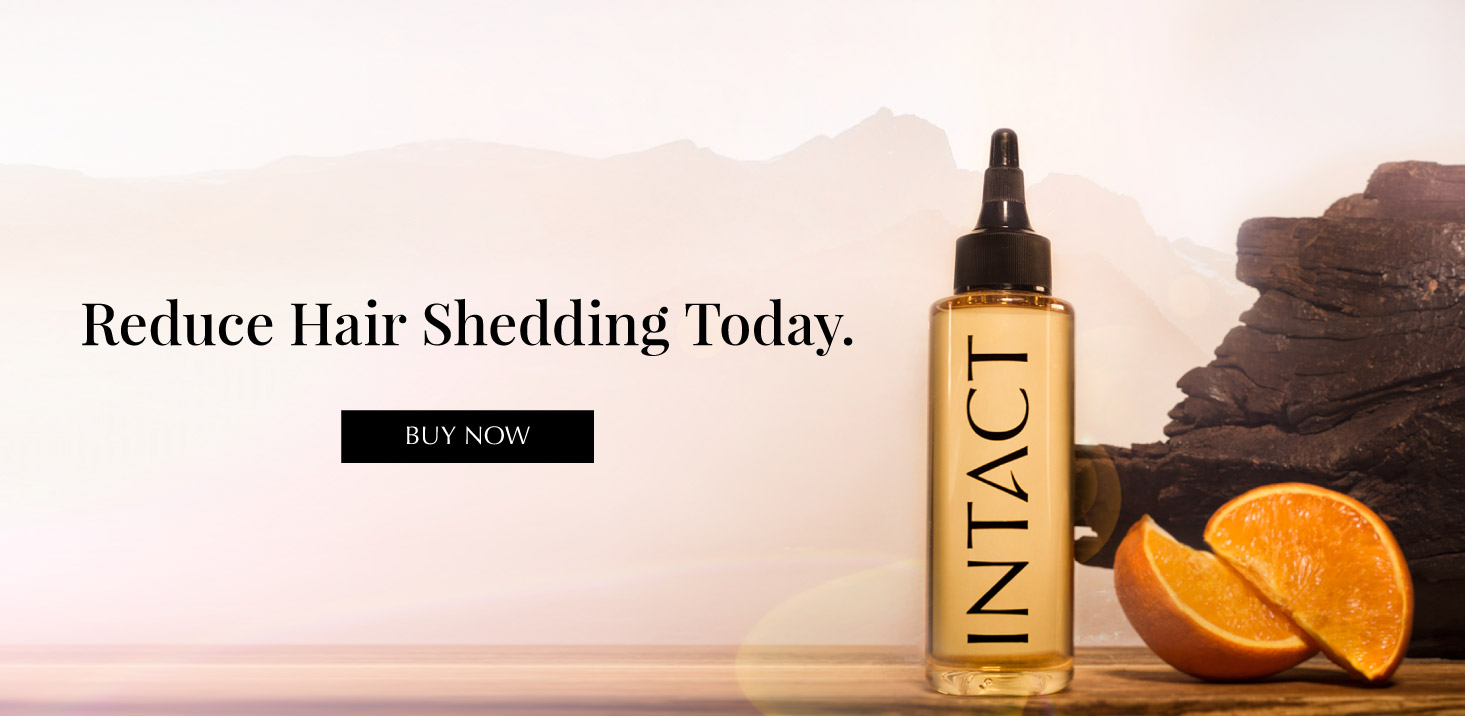Traction Alopecia Treatment

As chic as a slick-back ponytail may be, ultra-tight hairstyles are not kind to your strands. Rocking a tight bun, cornrows, or extensions daily can lead to a type of gradual hair loss called traction alopecia. Over time, the constant pulling on your hair follicles damages the strands and the follicle itself, causing the hair to fall out.
Because the styles that are so harmful to our hair are also so popular, traction alopecia is a pretty common issue. The condition can affect anyone with any hair type, but approximately a third of women of African descent who have permed or relaxed hair treatments suffer from traction alopecia. Athletes such as ballerinas and gymnasts are also susceptible because of the tight hairstyles they often wear.
The good news? This form of hair loss is much easier to treat than others, and traction alopecia treatment is readily available. It can even be done naturally, without the need for any harsh medication or surgery.
Keep reading as we outline everything you need to know about traction alopecia, what causes it, how to spot the signs and symptoms, and how to treat it both naturally and with proven products.
HOW TO TREAT TRACTION ALOPECIA NATURALLY

No one wants to throw a bunch of harsh chemicals on their scalp or undergo surgery if they don't have to. Luckily, there are a few avenues for traction alopecia treatment at home that will help ease the symptoms, reverse the condition and promote healthy hair growth.
Want to learn how to treat traction alopecia? Let's dive in.
Eliminate Tight Hairstyles
Everyone has a go-to hairdo that they're somewhat emotionally attached to. But if your all-day messy bun is putting too much tension on your follicles, it's time to let it go—at least for a little while. The simplest traction alopecia treatment at home is to keep your distance from any hairstyles that are pulled tight, such as:
- Cornrows
- Buns
- Ponytails
- Extensions
- Braids
The key is to give your hair and scalp a chance to rest and heal so that your follicles aren't under constant stress. It's also a good idea to avoid heated styling tools during this time, like curling irons and flat irons, as they can further damage your already thinning strands.
So let your hair down, babe! Enjoy the freeing feeling of rocking a low-key look while you treat traction alopecia. Once your hair has had a chance to grow out a bit, you can start experimenting with different styles that are less damaging.
Swap Elastic Hair Ties for Fabric or Scrunchies
What's the best treatment for traction alopecia? Keeping your hair loose. But if you can't imagine ditching your beloved ponytail, there's no need to go cold turkey. Just make a few adjustments to how you're securing your tresses so that it's not as tight.
Try swapping your regular hair ties for fabric-covered ones, scrunchies, or even a silk scarf. These gentler options will help to reduce the amount of stress on your hair, giving your follicles some much-needed relief.
Avoid Chemical & Heat Treatments
Treat your hair the way you would treat a delicate fabric—with care. That means taking a breather from trendy treatments like:
- Relaxers
- Texturizers
- Hot oil treatments
- Coloring
- Bleaching
- Perming
In a perfect world, you'd avoid them altogether. But at the very least, cut back on how often you use them and give your hair and your likely dry scalp plenty of time to recover between sessions.
Increase Your Protein & Iron Intake
Treating traction alopecia starts from the inside out. Protein and iron are two essential nutrients for hair growth. Without them, your locks will be weak and more susceptible to breakage.
You can increase your protein intake by eating more lean meats, beans, tofu, eggs, and dairy. Good sources of iron include dark leafy greens, legumes, nuts, and seeds. Consider taking a supplement if you're not seeing these nutrients often enough on your dinner plate.
Change Hairstyle Every Few Weeks
If you absolutely can't give up your favorite hairstyle, at least switch it up every few weeks.
Think of it like a little mini vacay for your scalp. Treat it to some deep conditioning masks, give it a massage and let it rest for a few days before putting any tension on it again. Trust us, your scalp—and hair—will thank you.
what ARE THE BEST PRODUCTS TO TREAT TRACTION alopecia?
Sometimes natural solutions will only take you so far. If your hair loss is severe or you've been dealing with it for a long time, you might need some other treatments for traction alopecia. Luckily there are a few hair loss products that can make a big difference in treating traction alopecia.
INTACT Anti Hair Shedding Treatment
As you're pulling out all the stops to save your strands and treat traction alopecia, you want to ensure that the hairs you do have are as healthy as possible. That's where INTACT comes in. This powerful product works to fortify and strengthen each hair follicle so that your hair is less likely to fall out during high-shedding activities like brushing, washing, and styling.
But it doesn't stop there—Intact also volumizes thinning hair, making it appear fuller and more lustrous. Apply it 30 minutes before your shower, and you'll notice a difference in the quality of your hair immediately.
Minoxidil (Rogaine®)
Minoxidil is a topical solution that's often used to treat hair loss and promote hair growth. This traction alopecia treatment works by increasing blood flow to the scalp and widening the hair follicles, stimulating hair growth.
Minoxidil is available in a foam or liquid form, and you can buy it over the counter at most pharmacies in 2% and 5% solutions. It's important to note that it can take up to four to six months to see results—and Minoxidil doesn't work for everyone.
Daniel Alain's research team discovered that only people with the SULT1A1 enzyme activity present in their scalp responded to Minoxidil. So, if you're thinking about trying this treatment for traction alopecia, be sure to get tested for the SULT1A1 enzyme first using our Minoxidil Response Test (MRT) for men and women.
Topical Antibiotics
Sometimes, traction alopecia can cause inflammation on your scalp in the form of tenderness or even bumps. If this is the case, your doctor may prescribe a topical antibiotic to soothe any irritation and speed up the healing process.
what causes traction alopecia?
Unfortunately, many of the tools and methods we use to achieve a celebrity-esque mane are actually doing us more harm than good. From weaves and braids to tight ponytails and buns, putting too much tension on the follicles can cause them to become damaged, which leads to hair loss.
Learning how to treat traction alopecia properly is just one part of the equation. Knowing what to avoid both at home and in the salon is key to preventing any further damage which may cause hair loss.
Hairstyles
Again, the best traction alopecia treatment at home is to simply give your scalp a break. That means ditching any tight hairstyles that damage your hair, like:
- Weaves and extensions
- Cornrows
- Tight braids
- Ponytails that are pulled too tight
- Buns that are pulled too tight
Of course, hair is deeply rooted in our identity. So, it’s not always easy to ditch your go-to style while experiencing alopecia.
Putting your hair in a ponytail now and then won't cause much harm. But if you notice any balding, thinning, or receding hairline around the area where you typically wear these hairstyles, it's time to take a break. The constant pulling and tension on the hair follicles can lead to inflammation, scarring, and eventually hair fall.
When you do wear your hair pulled back, make sure it's not too tight. You should be able to fit at least two fingers between your hair and your scalp. If not, it's too tight.
Extensions or Weaves
Everyone loves long, luscious locks. But unfortunately, hair extensions and weaves can cause traction alopecia if they're installed too tightly or if your hair is too weak to support them.
If you're considering extensions, be sure to consult with a professional stylist who can properly apply them. And if you already have extensions, ask your stylist to loosen them, so they're comfortably fitted.
But if you're experiencing any hair loss around the extension area, it's time to treat traction alopecia by taking them out and letting your natural hair shine instead.
Excessive Blow-drying & Flat Ironing
Who doesn't love the feeling of silky, smooth hair? But if you're using a blow-dryer or flat iron too often, you could be damaging your hair—and increasing your risk of traction alopecia.
The high heat from these styling tools can cause the protein in your hair to break down, making it weak and more likely to fall out. So, if you're using a blow-dryer or flat iron daily, cut back to just a few times a week. And when you do use them, be sure to use a heat protectant spray to minimize the damage.
Headwear
Whether you're rocking a beanie to keep warm in the winter or sporting a cute baseball cap on a sunny day, headwear can actually cause traction alopecia as it can cause friction against the hair follicles. By agitating the follicles, hair can fall out.
Treat traction alopecia immediately by eliminating any tight hats, headbands, and helmets from your wardrobe. Or, only wear them for rare occasions to give your scalp relief.
Relaxers
If you have curly hair, you may be tempted to use relaxers or perms to achieve a straighter look. But these harsh chemicals increase breakage and, with continued use, can permanently damage follicles—making new growth impossible.
If you're treating traction alopecia, it's best to ditch the relaxer and embrace your natural texture.
Long Hair
When it comes to traction alopecia, the longer the hair, the greater the risk.
Long hair is simply heavier, and the weight of your strands can pull on the roots, causing follicular damage. So, if you're experiencing traction alopecia, it may be time for a trim.
A great hack? Keep your length but have your stylist cut shaggy layers to lighten the load and spruce up your look!
Combine the Above Tips for Best Results
Tight hairstyles, harsh chemicals, and excessive heat can all damage your hair and lead to traction alopecia. So, it's important to take a break from these damaging habits and let your hair recover.
The best traction alopecia treatment is simply giving your scalp and hair a break, so the follicles can heal, and new growth can begin. So lay off the tight hairstyles, harsh chemicals, and heat styling for a while, and allow your hair the opportunity to recover.
Trust us, your hair will gloriously thank you.
what ARE the signs & symptoms of traction alopecia?
Whether you're looking for traction alopecia treatment at home or seeking professional help, it's important to first identify the signs and symptoms of this condition.
By doing so, you can catch it early and start healing before the damage becomes permanent. Read on to learn the signs and symptoms of traction alopecia, so you can start treatment ASAP.
Receding Hairline
Is your hairline shifting back farther than it used to? This change can be subtle at first, but you'll notice it around your temples, forehead, or the nape of your neck.
A Widening Part
Where you part your hair should remain pretty much the same over time. A broadening part is commonly seen in traction alopecia cases caused by tight braids and cornrows.
Thinning Around the Hairline, Temples & Nape
The most prominent places of thinning will likely be seen in the same places you pull your hair the tightest.
If you wear tight ponytails, for example, you may notice thinning around the hairline and nape. If you wear cornrows or braids, you may see thinning along your temples.
Scalp & Follicular Inflammation
Tight hair follicles are inflamed hair follicles. So, if you notice your scalp is red, tender, itchy, or otherwise inflamed, it's a sign of traction alopecia.
Blisters
If you've ever worn a tight hairstyle for too long, you know how painful it can be when your hair starts to tug at your scalp. In severe cases of traction alopecia, you may develop blisters or sores on your scalp from all the tension.
Bumps or Pimples
In the very early stages, you may start to see small bumps or pimples around the front and the side of your scalp. Traction alopecia treatment for this symptom is usually a topical antibiotic to clear the infection and help heal the damaged follicles.
Redness, Itching, Irritation or Scalp Ulcers
Like any other inflammation, the scalp may become red, itchy, or irritated. In severe cases, you may even develop scalp ulcers that are painful and take longer to heal.
Bald or Balding Patches
Traction alopecia can eventually lead to bald spots and patches if left untreated. These spots are typically small at first but can grow larger over time.
Patches of Shiny, Scarred Skin
In some cases, the hair loss may be so severe that it results in patches of shiny, scarred skin. This is usually seen in advanced stages of traction alopecia, and the damage is often permanent.
If you're experiencing any of these symptoms, it's time to start seeking traction alopecia treatment. The sooner you treat the condition, the less damage will be done, and the easier it will be to reverse.
DISCOVER TREATMENT FOR TRACTION alopecia at daniel alain
At Daniel Alain, we’re passionate about meeting you wherever you're at in your hair loss journey—especially when it comes to traction alopecia.
Our hair loss solutions are designed to give you the best chance at regrowing your hair and restoring your confidence. We offer a full line of hair loss solutions to help with every stage of hair loss, from early-stage thinning to complete baldness.
If you're looking for traction alopecia treatment, we can help. Our team of experts will work with you to determine the best route for you, whether that's reducing shedding with our INTACT formula or rocking a luxe human hair topper while you wait for regrowth.
No matter what, we'll be there with you every step of the way, providing the support and resources you need to get your hair back. Visit us online or give us a call today to learn more about how we can help you achieve the hair of your dreams!
book a free consultation
Our stylists will help you find the right hair loss solution just for you

Frequently Asked Questions
What is Traction Alopecia?
Traction alopecia is a type of hair loss that's caused by repeated pulling or tension on the hair follicles. This can happen from hairstyles like buns, cornrows, and ponytails or from using tight hair accessories like headbands.
Traction alopecia usually starts with small bald or balding patches. If the condition is left untreated, it can eventually lead to complete hair loss.
How Do I Style My Hair with Traction Alopecia?
If you have traction alopecia, it's important to be gentle with your hair and avoid any hairstyles or accessories that put too much tension on the follicles.
Instead, opt for styles that are loose and gentle, like a low ponytail or loose braids. You can also try using soft headbands or scarves instead of tight hair ties.
Is There a Cure for Traction Alopecia?
Yes—the most effective traction alopecia treatment is to stop the behavior that's causing the hair loss in the first place. This may mean changing your hairstyle or avoiding tight hair accessories.
In some cases, the damage from traction alopecia is irreversible. However, if you catch it early enough, you may be able to regrow your hair with the help of medications or surgery. The key is to start treatment as soon as possible to prevent further damage.
How Does INTACT Help Traction Alopecia?
Weak follicles are susceptible to damage, which can lead to hair loss. INTACT is clinically proven to fortify and strengthen the follicles, making them less likely to break or fall out.
INTACT also helps to reduce shedding, so you can retain more of your natural hair.
Can You Regrow Hair From Traction Alopecia?
Yes—so long as the follicles are not permanently damaged, it is possible to regrow hair from traction alopecia. The sooner you start treatment, the better your chances will be.
If the follicles are too damaged, you may need to rely on other methods like human hair wigs or surgery.
How Long Does it Take Traction Alopecia to Grow Hair Back?
The amount of time it takes to regrow hair from traction alopecia will vary depending on the severity of the condition. It can generally take anywhere from six months to a year to see significant regrowth.
Can Traction Alopecia be Reversed?
Yes—if you catch traction alopecia before the follicles are permanently damaged, you may be able to completely reverse the condition. However, if the follicles are irreversibly damaged, you may need to rely on other methods like buying a human hair wig or surgery.
Does Traction Alopecia Cause Hair Thinning?
Yes—traction alopecia can cause hair to become thinner and weaker over time. When your follicles are damaged, they stop producing healthy, strong hair.
Is Traction Alopecia Permanent?
Not always—if you catch traction alopecia early enough, you may be able to completely reverse the condition by simply avoiding the hairstyles or accessories that are causing the damage.
If your follicles are damaged to the point where they're no longer able to regrow hair, the condition is considered permanent. In this case, you may need to rely on human hair wigs and toppers or surgery to restore your hair.
What is Late Stage Traction Alopecia?
Late-stage traction alopecia is when the follicles are so damaged that they can no longer regrow hair. Signs of this stage include severe thinning and scarred balding on the scalp.
Is Traction Alopecia Scarring?
It can be. If you go years without treatment, the damage to your follicles can be so severe that it results in scarring along with scalp itchiness and tenderness.
Can Biotin Help with Traction Alopecia?
If your hair follicles become inflamed (also known as hair folliculitis), your doctor may prescribe you Biotin supplements as a traction alopecia treatment.
Biotin is a water-soluble vitamin that helps to strengthen hair and nails. It's found in foods like eggs, salmon, and avocados.
Can Castor Oil Help with Traction Alopecia?
Massaging your scalp with castor oil may help to improve circulation and promote hair growth.
Castor oil is a natural remedy often used to treat hair loss and scalp conditions. It's high in fatty acids, which can help to nourish and moisturize the scalp.
Is Coconut Oil Good for Traction Alopecia?
Another home remedy that's often used to treat traction alopecia is coconut oil. You can use it the same as castor oil, but not as frequently as too much can clog the pores and make it harder for new hair to grow.
When Should I See a Doctor for Traction Alopecia?
When you first notice any signs of traction alopecia, it's important to see a doctor. The sooner you start treatment, the better your chances of reversing the condition.


